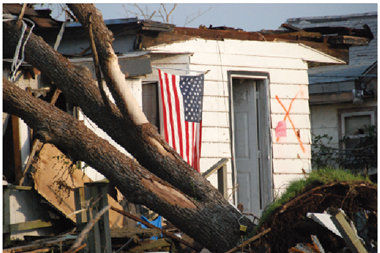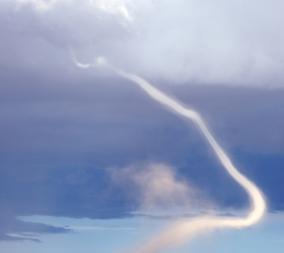Italy, Japan, China, USA, Spain and France rated “high risk”
New research identified Haiti and Mozambique as the countries most vulnerable to economic losses from natural disasters.
A number of industrialised economies, including Italy, Japan, China, USA, Spain and France, were also rated by Maplecroft as “high risk”.
The Natural Disasters Economic Loss Index (NDELI) evaluated the economic impact of earthquakes, volcanic eruptions, tsunamis, storms, flooding, drought, landslides, extreme temperatures and epidemics between 1980 and 2010.
The index measured the risk of economic losses from damage costs and deaths caused by natural disasters to reflect both the direct economic impact of natural disasters on property and infrastructure, plus the indirect economic impacts on populations. The NDELI was split into two rankings; one measuring countries that suffer a high frequency of natural disasters and another for countries that experience less than one event per year.
Seven countries were rated at “extreme risk” in the high frequency index, with Haiti (1), Mozambique (2), Honduras (3), Vanuatu (4), Zimbabwe (5), El Salvador (6) and Nicaragua (7) topping the ranking. However, the industrialised economies of Italy (18), Japan (23), China (25), USA (29), Spain (37) and France (48) are all in the “high risk” category, whilst India (51), UK (53), Germany (54) and Canada (55) were rated “medium risk.”
“When economic losses are taken as absolute figures, it is predominantly the industrialised countries, such as USA and China, that shoulder the greatest costs,” explained Maplecroft Environmental Analyst, Dr Anna Moss. “However, when losses are calculated as a percentage of GDP, it is developing countries that are most exposed. For example, the USA’s losses from the 1997-1998 El Niño were US$ 1.96 billion, or 0.03 percent of GDP, whereas in Ecuador, economic losses were US$ 2.9 billion, or 14.6 percent of GDP.”
“Mozambique is particularly vulnerable to the hydro-meteorological impacts of climate change
Haiti, which was totalled by a 7.0 magnitude earthquake in January 2010, suffered an estimated 222,570 fatalities and close to $8bn worth of economic damage, according to its government. However, Haiti is also highly vulnerable to hydro-meteorological disasters and Maplecroft’s research revealed that even without the damage from the 2010 earthquake, which was equivalent to 73% of annual GDP, the Caribbean country would still have had the 12th highest economic loss in the index.
Mozambique is particularly vulnerable to the hydro-meteorological impacts of climate change and has suffered an increasing amount of floods and droughts in the last decade. In 2000, Mozambique was hit by the worst flood in 50 years, which killed 800 and caused economic losses estimated at US$419m. The World Bank also reported that Mozambique is at increasing risk from storm surges (flood of water caused by wind and low pressure) due to climate change and estimates that 41% of the country’s coastal area and 52% of coastal GDP is vulnerable.
According to Maplecroft’s low frequency index, it is the small island nations that are particularly vulnerable to the impacts of natural disasters. Geographically they lie in areas of high geophysical hazard risk and often bear the full force of tropical cyclones. They make up 21 of the 27 states rated “extreme” or “high risk” with Montserrat (1), Niue (2), Cook Islands (3), Samoa (4), American Samoa (5), Maldives (6) and Grenada (7) most susceptible.
Swiss Reinsurance Co. estimates that the cost of natural disasters to the insurance industry in 2010 could reach $110bn worldwide. The earthquake in Chile, on February 27, is estimated to cost $8bn alone, which is 3.53% of the country’s GDP, whilst Windstorm Xynthia in France may cost insurers as much as €2bn, equal to 0.13% of French GDP.
This year’s Atlantic hurricane season is also set to be “extremely active” according to the U.S. National Oceanic and Atmospheric Administration, which is predicting 14 to 23 named storms.


















